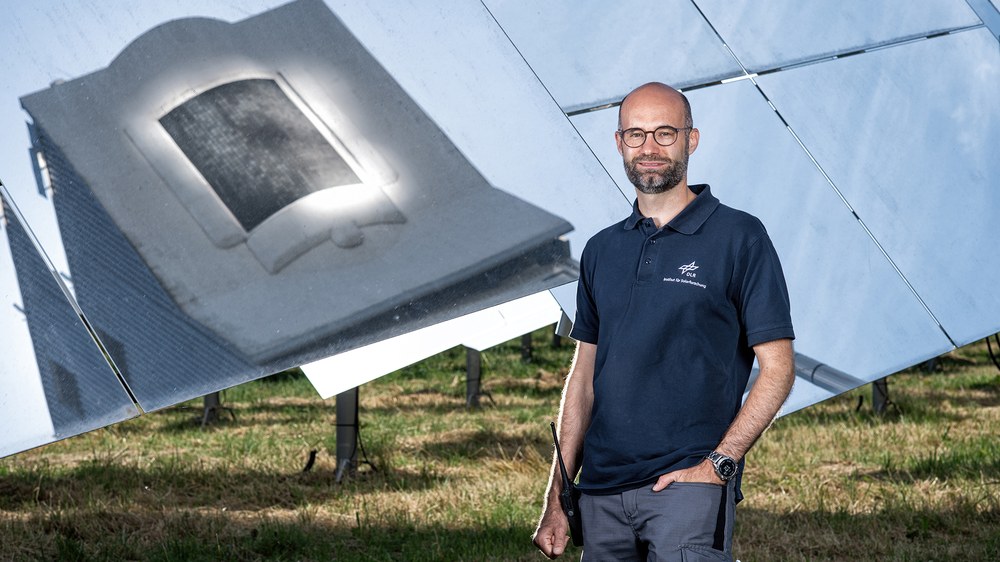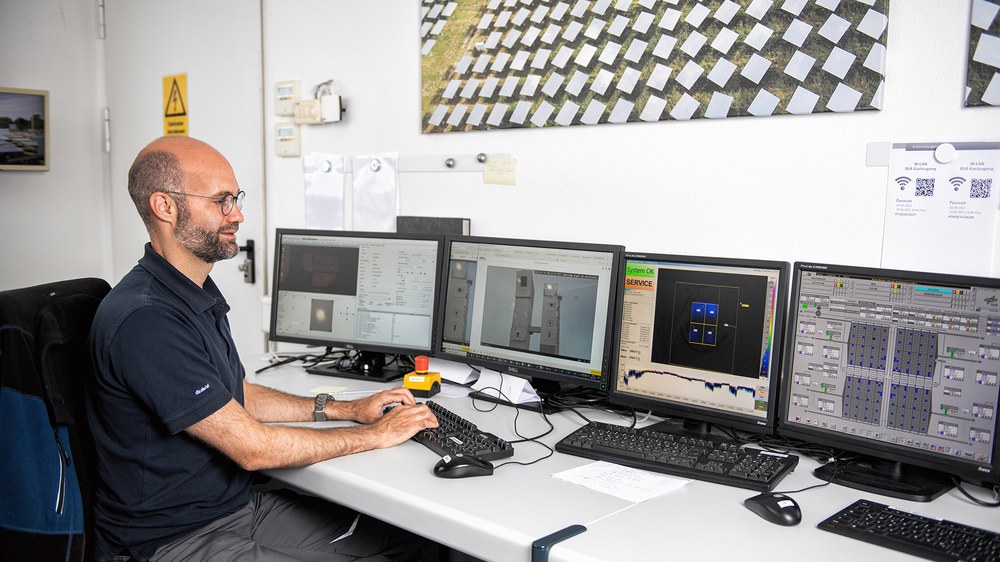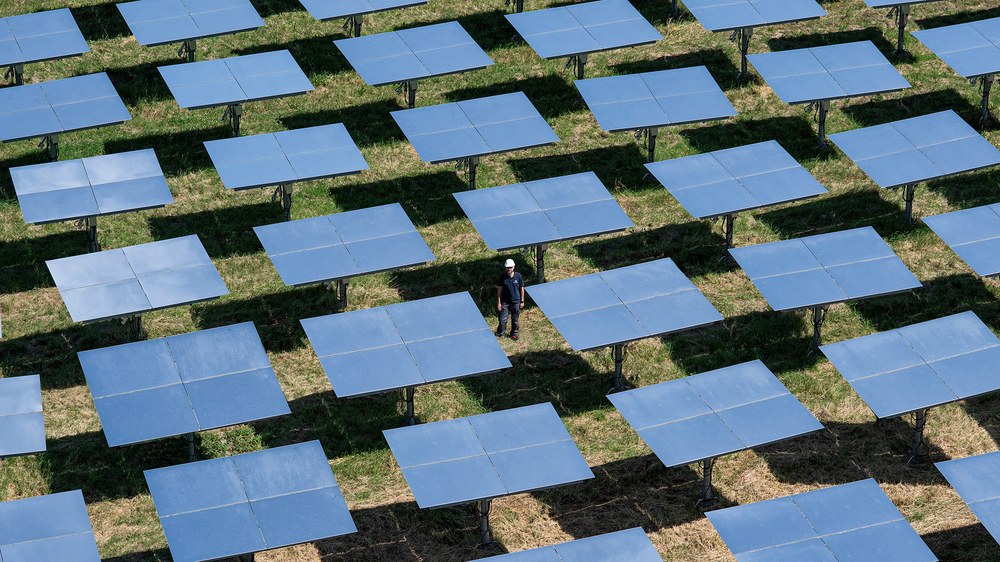The master of more than 2000 heliostats

Oliver Kaufhold is the master of 2016 heliostats – movable mirrors that direct sunlight onto the receivers in DLR's two solar towers in Jülich. Ultimately, the weather dictates his daily routine. In the summer, when sunny days are plentiful and there is no cloud cover, the engineer's working days are intense and long. In the winter, it is the crisp cold days when the sun hits the mirrors through a dry atmosphere – unhindered by moisture in the air. On these days, experiments are carried out by DLR and external partners, and Oliver Kaufhold is responsible for operating the heliostat field.
The sunny side of the work
While outside the sun shines above the eight-hectare field with the heliostats, it is cold in the control room halfway up the solar tower. The air conditioning is running, the heliostats are displayed as small squares on the six screens, cameras are transmitting outdoor images and data in real time show what is happening in the tower's receiver. Actually, there were two experiments scheduled for today, for which engineer Oliver Kaufhold would have made the heliostats available. But changes had to be made to both experiments at short notice. So the 40-year-old is using today's sunshine to fill the storage tank in the solar tower. The tower, which is about 60 metres high, is a solar thermal experimental power plant that could supply around 400 households with electricity. To do this, the solar radiation is directed onto the main receiver of the solar tower, which consists of ceramic absorber modules. In the process, air is heated to about 620 degrees Celsius. The heat is used to generate steam, which produces electricity via a turbine. On sunny days, a storage tank can also be heated, which can release its energy to compensate for periods of cloud drift or on cloudy days.

"We have to remain flexible in our work – our plans can always be scrapped at short notice," says Oliver Kaufhold, who works with engineers and technicians in the 'Solar Power Plant Technology' group at the Institute of Solar Research and operates the two towers at the Jülich site. Clouds drifting over the test field, experiments that are still being tweaked and optimised, technology that doesn't work as smoothly as planned. The team has to adapt to all the circumstances to make the research possible.
Experience and intuition
Oliver Kaufhold came to the DLR Institute of Solar Research in 2013 - after completing secondary school, training as an industrial mechanic in equipment and precision engineering, studying mechanical engineering and working as a research assistant at the Solar Institute Jülich. Back then, he says he was somehow the 'jack-of-all-trades' at the heliostat field, but that time is fortunately over. Just four years after construction, the mirrors were corroded and many of the motors that align the mirror surfaces were broken. His first and major task was therefore to repair the reflector system and optimise it for operation. New procurement, maintenance, operation, everything had to be done as simultaneously as possible. The hundreds of hours in the heliostat field, however, gave him the experience from which he benefits today in operating, monitoring the heliostats and analysing the heliostat performance. What power output do the researchers need? Which heliostats can be ideally used for an experiment? Which experiments, if any, can be combined and run in parallel?
Oliver Kaufhold discusses the experimental procedure with the researchers before each use of the tower and heliostat field, prioritises the experiments with them and allocates the mirrors for the experiments accordingly. Sometimes experiments run simultaneously on both towers – the solar tower built in 2008 with its 22 square metre receiver and the multifocus tower built in 2020. The experience acquired over the last ten years has given him the instinct to recognise even the smallest potential for optimisation and, for example, to align the focal spot precisely with the centre of the receiver in the final tuning. Or, with the right amount of patience, using the heliostats to heat up the pipes inside the tower in which molten salt must flow as a heat transfer medium during the test.
The weather sets the pace

"I've always found this technology exciting," says the planning and test engineer. In his thesis at the Solar Institute Jülich, he was already involved in setting up a simulation procedure for investigating ceramic high-temperature absorbers for solar tower power plants. Ultimately, it is probably the variety of tasks and the necessary flexibility that fascinate him about his work. When solar radiation sets the pace, a completely regular office job is not possible. The bad weather periods then provide a work-life balance. On the screens in the control room, the heliostats are just going into safety mode. All mirror surfaces point towards the sky. The system is not safe when the sun is focused by the mirrors. During operation, no one is allowed on the roof of the towers; in the experimental chambers, the experiments shut down if someone enters during an experiment. There is also a large red emergency stop button in the control room itself, which immediately defocuses the mirrors and interrupts the concentration of sunlight if worst comes to worst. Why did the mirrors just go into safety mode on their own? It could have been a brief power interruption. Oliver Kaufhold will find out. Nothing happens as planned. One is the simulations, the other is reality, he says.
Tags:
